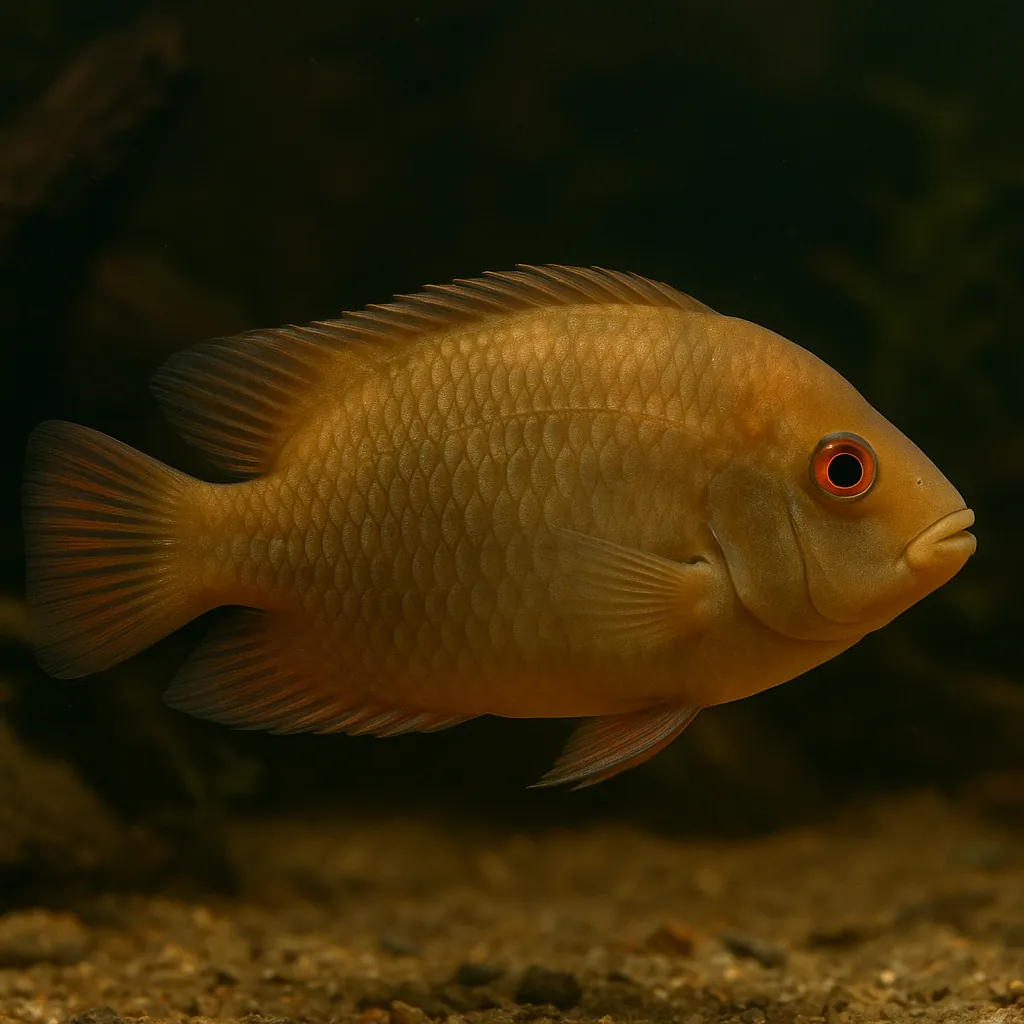
Parrot cichlid
Introduction
The Parrot cichlid, also known as the Blood Parrot cichlid, is a vibrant and unique freshwater fish that has captivated aquarists worldwide. With its distinctive rounded body, beak-like mouth, and bright coloration—ranging from red and orange to yellow—this hybrid species adds a splash of color to any aquarium. While their charming appearance and playful behavior make them appealing, Parrot cichlids require specific care to thrive, making them more suitable for aquarists with some experience.
What makes Parrot cichlids unique among aquarium fish?
Parrot cichlids are hybrid fish, resulting from the crossbreeding of various cichlid species, which gives them their distinctive appearance and certain anatomical peculiarities.
Are Parrot cichlids suitable for beginner fishkeepers?
Due to their specific care requirements and potential health issues stemming from their hybrid nature, Parrot cichlids are better suited for aquarists with some experience.
Care and Environment
Proper care and an appropriate environment are crucial for the health and well-being of Parrot cichlids. Below is a comprehensive guide to their care requirements:
What is the minimum tank size for a Parrot cichlid?
A single Parrot cichlid requires a minimum tank size of 114 liters (30 gallons), but a larger tank of at least 208 liters (55 gallons) is recommended for adults to provide ample swimming space.
What are the ideal water parameters for Parrot cichlids?
Maintain water temperatures between 22-28°C (72-82°F) and a pH level of 6.5-7.5. Water hardness should be moderate, ranging from 4-18 dGH.
How should the tank be set up for Parrot cichlids?
Use a fine sand or smooth gravel substrate to prevent injury to their delicate mouths. Incorporate hiding spots with rocks, driftwood, and caves to reduce stress. Ensure there is ample open space for swimming.
What type of filtration and lighting do Parrot cichlids require?
Due to their high waste production, a robust filtration system, such as a canister filter, is essential to maintain water quality. Moderate lighting is sufficient; avoid overly bright lights to prevent stress.
What should be included in a Parrot cichlid's diet?
Parrot cichlids are omnivores. Provide a varied diet including high-quality cichlid pellets, frozen or live foods like bloodworms and brine shrimp, and occasional vegetables such as blanched spinach or peas. Feed them twice daily, offering only what they can consume within 3-5 minutes to prevent overfeeding.
Are there any specific challenges in keeping Parrot cichlids?
Parrot cichlids may have anatomical issues due to their hybrid nature, such as deformed mouths, which can make feeding challenging. They can also be sensitive to water quality and may exhibit territorial behavior, especially during breeding periods.
Origin and Habitat
Parrot cichlids are man-made hybrids and do not exist in the wild. They were first bred in Taiwan in the 1980s by crossing various cichlid species, including the Midas cichlid and the Redhead cichlid.
Do Parrot cichlids have a natural habitat?
No, Parrot cichlids are hybrid species created through selective breeding and do not have a natural habitat in the wild.
What are the parent species of Parrot cichlids?
Parrot cichlids are typically bred from species like the Midas cichlid (Amphilophus citrinellus) and the Redhead cichlid (Paraneetroplus synspilus).
Temperament and Compatibility
Parrot cichlids are generally peaceful but can exhibit territorial behavior, especially during breeding periods. They are best kept with other large, robust fish that can handle themselves, such as large catfish or other South American cichlids like Severums and Green Terrors.
Can Parrot cichlids be kept with smaller fish?
While Parrot cichlids can coexist with smaller fish if raised together, there is a risk that small fish may be eaten, especially if introduced later.
What are suitable tank mates for Parrot cichlids?
Suitable tank mates include Angelfish, Silver Dollars, Tinfoil Barbs, Convicts, Severums, Jewel cichlids, and hardy medium-sized catfish such as Doras and Synodontis.
How can aggression be minimized in a tank with Parrot cichlids?
Providing a spacious tank with plenty of hiding spots and visual barriers can help reduce territorial disputes and aggression among tank mates.
Interesting Facts
Parrot cichlids are known for their unique appearance and behaviors. Here are some intriguing facts about them:
Why do Parrot cichlids have a beak-like mouth?
Their beak-like mouth is a result of hybridization, which can lead to anatomical deformities affecting their ability to feed properly.
Can Parrot cichlids breed successfully?
While Parrot cichlids often spawn, the males are usually infertile, and the eggs typically do not hatch. However, females can sometimes crossbreed with non-hybrid cichlids like Convicts or Severums.
How long do Parrot cichlids live?
With proper care, Parrot cichlids can live up to 10-15 years in captivity.
Sources
All information in this article has been gathered from the following reputable sources:
Overview
Recommended Tank Size 54.9 Gallons (for adults) |
Minimum Group Size 1 |
Minimum Tank Volume 30.1 Gallons |
Maximum Adult Length 7.9 inches |
Average Adult Length 5.9 inches |
Shoaling (6+ required) No |
Preferred Water Type Freshwater, slightly acidic to neutral |
Temperature Range (°C) 22-28 |
pH Range 6.5-7.5 |
Water Hardness (dGH) 4-18 |
Typical Lifespan (years) 10 years |